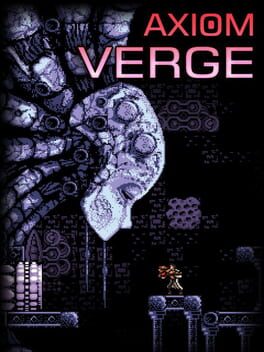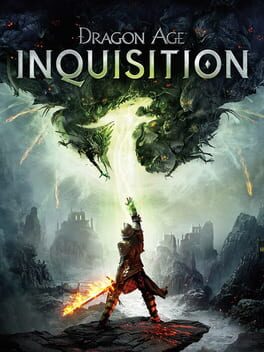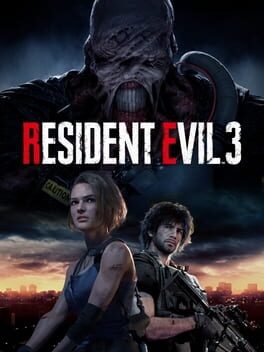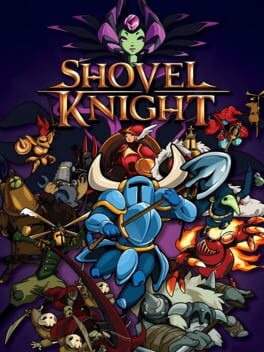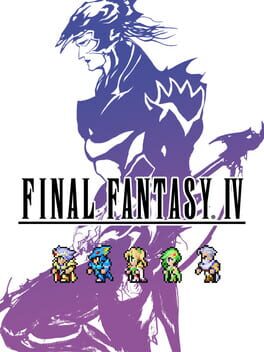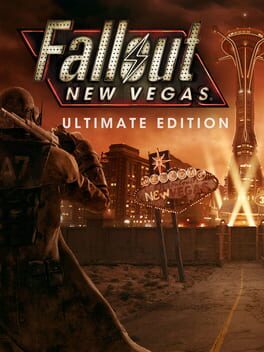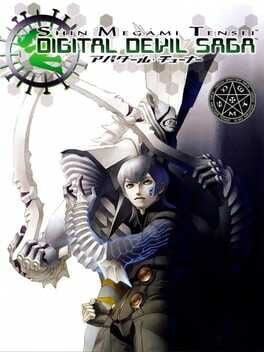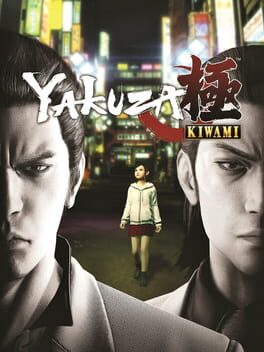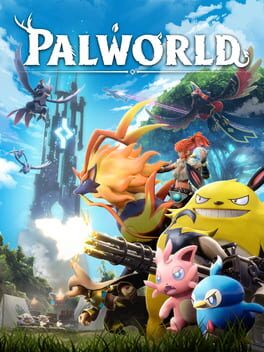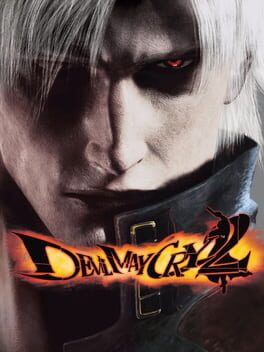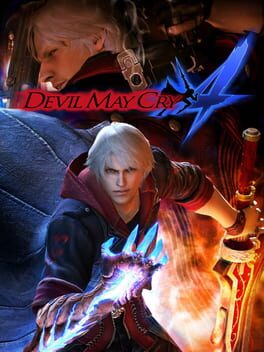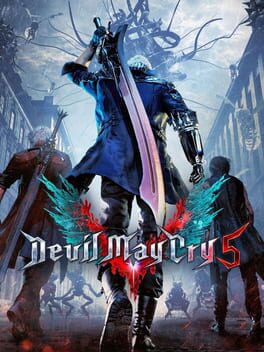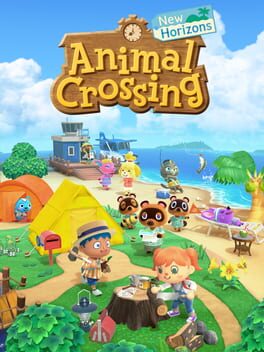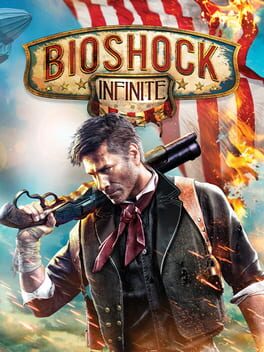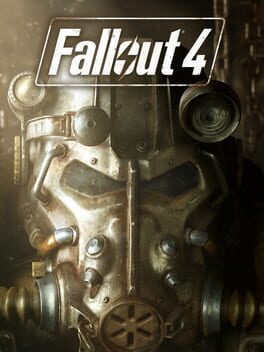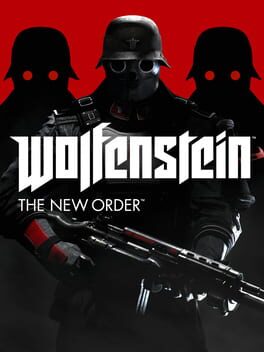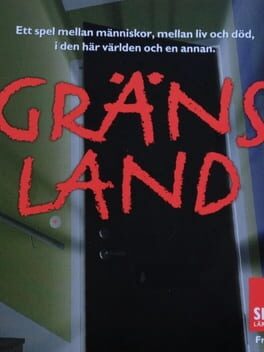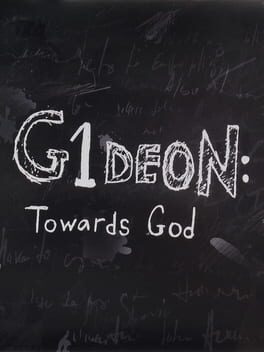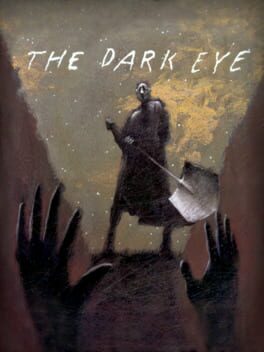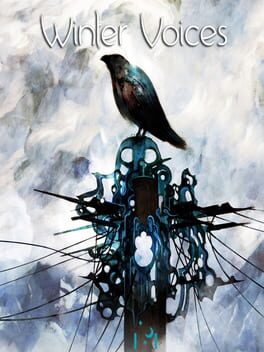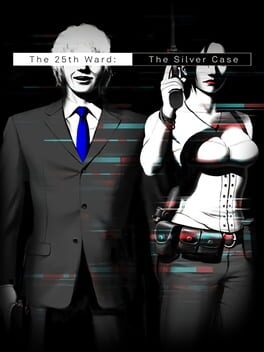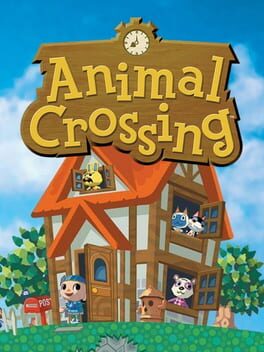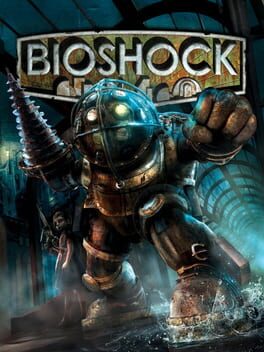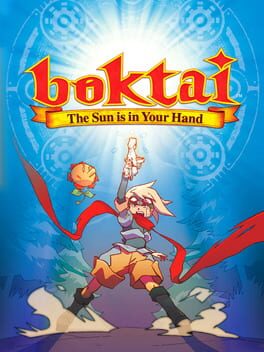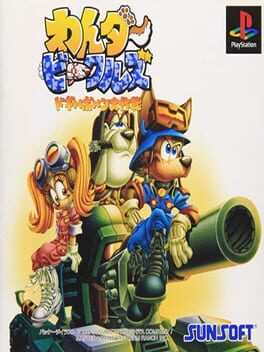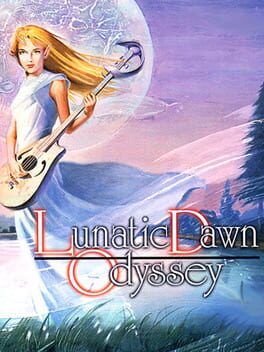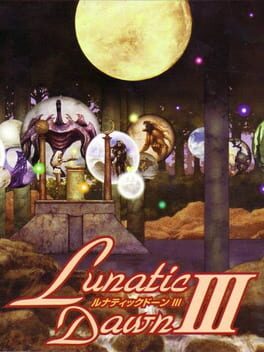Maxim_
BACKER
28 reviews liked by Maxim_
Axiom Verge
2015
So many weapons! The music is fantastic!
The fact that a single person developed this game is mind-blowing given the amount of content, the variety of environments, and the attention to detail. It's even more remarkable considering that one person was skilled enough to handle the art, level design, coding, and the stunning music (the music in this game is truly exceptional!). Despite the retro and minimalist style, there are some beautiful scenes, and the game smartly zooms out to surprise the player and to let them experience the scale of this world.
Compared to other metroidvanias, Axiom Verge doesn’t really let you take different exploration paths, it usually points you in the right direction until you have almost all the upgrades you need to reach the end game, but it doesn’t prevent you from backtracking either (except towards the beginning, and that is smart because it saved me getting lost after I missed a section I could reach). My problem is that every time I went to a section I visited before to see if my new powers would unlock anything new I was bored when I had to go back to where I was supposed to be. The names of the areas were also too weird for me to remember which one is which.
The Bosses were the most disappointing part of the game, with their limited attack patterns, with some attacks being impossible to predicts, and the unclear vulnerable spots. Another problem is that secret areas are often absolutely invisible, and I ended up always running around spamming the powers needed to reveal them, wasting a lot of time for little value (I am not a completionist).
So many weapons! The music is fantastic!
The fact that a single person developed this game is mind-blowing given the amount of content, the variety of environments, and the attention to detail. It's even more remarkable considering that one person was skilled enough to handle the art, level design, coding, and the stunning music (the music in this game is truly exceptional!). Despite the retro and minimalist style, there are some beautiful scenes, and the game smartly zooms out to surprise the player and to let them experience the scale of this world.
Compared to other metroidvanias, Axiom Verge doesn’t really let you take different exploration paths, it usually points you in the right direction until you have almost all the upgrades you need to reach the end game, but it doesn’t prevent you from backtracking either (except towards the beginning, and that is smart because it saved me getting lost after I missed a section I could reach). My problem is that every time I went to a section I visited before to see if my new powers would unlock anything new I was bored when I had to go back to where I was supposed to be. The names of the areas were also too weird for me to remember which one is which.
The Bosses were the most disappointing part of the game, with their limited attack patterns, with some attacks being impossible to predicts, and the unclear vulnerable spots. Another problem is that secret areas are often absolutely invisible, and I ended up always running around spamming the powers needed to reveal them, wasting a lot of time for little value (I am not a completionist).
So many weapons! The music is fantastic!
Mother 3
2006
Chapter One
A child ran off from their village, filled with rage. A petty kind of anger; one that the child would have all but forgotten about the next time you saw them. This next time would never come, though. The child disappeared and in their place stood a Destroyer.
Chapter Two
The village seemed different. Strange new people kept showing up, with pig shaped masks covering their eyes. On the surface, they went about their business and chatted like any other villager but the more mind you paid them, the more their words rang hollow. Their thoughts and jokes seemed inorganic; mass produced even. As these Pigmasks gathered in the village, the original people there felt alienated. An old man, once known for his insights and his sharp wit would get angrier and angrier, lashing out at those around him and eventually leaving. More villagers would follow suit, some of them against their will, as this community they saw as a safe haven to share things they couldn’t share anywhere else slowly but surely became part of that “anywhere else.”
Were these Pigmasks to blame for everything? Or was it merely a case of things that always infested the community finally bubbling up to the surface? And what of the Destroyer, a one-time villager, now hailed as the champion of the Pigmasks?
Chapter Three
A monkey walked through a forest with boxes on their back; head and torso fighting a fierce battle to not fall and hit the ground. This grueling process eventually became routine and the monkey’s body eventually went on autopilot. They had all this time to think about if they’ll ever move past this task and if they’ll ever have a purpose.
Did the Destroyer have the same thoughts in this same forest?
Chapter Four
Another village child was not unlike the one who would become the Destroyer. In fact, you could say that these two village children were a single entity; two sides of the same coin. The Destroyer was the head of this coin, facing up and always the topic of conversation from those who saw this “face.” The tail, stuck to the ground, reveled in the attention the head received. They took glee in seeing friends talk about the Destroyer without any clue of its relation to the one standing near them. They searched for other villagers’ words on this mysterious Destroyer and snuck into houses to see them: the praise, the insults, the natural discussions surrounding this new “symbol” of the village.
This was not healthy for the village child. But still, could you blame them? This sensation of feeling important, even if that importance was just a niche micro-celeb in a small village, was much more comforting than the cold reality of meaning nothing in the grand scheme of things.
Chapter Five
A Pigmask working in a tower was a big fan of a rock band. They were utterly awestruck at the sight of that band’s merchandise on the man that entered the tower earlier that day and could not talk about anything other than that band: expressing their love of the band’s work, idolizing the ones behind it as supposedly great people, and elevating the band to some moral paragon because of milquetoast political opinions in its songs.
The Destroyer was in the tower too, watching this Pigmask’s conversation with mere apathy if not active contempt.
Chapter Six
Sometimes, ghosts of the past appear as reminders of what will never come back.
Chapter Seven
The Destroyer pulled a needle out of the ground and felt nothing. They pulled quite a bit of these needles before but something was different this time. The act was now done only out of some perceived obligation; to the Pigmasks and villagers cheering on or to the fake images of hearts that result from the act. It was time for the last needle to be pulled.
Chapter Eight
The Destroyer laid on the ground motionless as its tail pulled the final needle on its behalf. Its supposed stardom was crushed into not even half a star.
It’s over.
A child ran off from their village, filled with rage. A petty kind of anger; one that the child would have all but forgotten about the next time you saw them. This next time would never come, though. The child disappeared and in their place stood a Destroyer.
Chapter Two
The village seemed different. Strange new people kept showing up, with pig shaped masks covering their eyes. On the surface, they went about their business and chatted like any other villager but the more mind you paid them, the more their words rang hollow. Their thoughts and jokes seemed inorganic; mass produced even. As these Pigmasks gathered in the village, the original people there felt alienated. An old man, once known for his insights and his sharp wit would get angrier and angrier, lashing out at those around him and eventually leaving. More villagers would follow suit, some of them against their will, as this community they saw as a safe haven to share things they couldn’t share anywhere else slowly but surely became part of that “anywhere else.”
Were these Pigmasks to blame for everything? Or was it merely a case of things that always infested the community finally bubbling up to the surface? And what of the Destroyer, a one-time villager, now hailed as the champion of the Pigmasks?
Chapter Three
A monkey walked through a forest with boxes on their back; head and torso fighting a fierce battle to not fall and hit the ground. This grueling process eventually became routine and the monkey’s body eventually went on autopilot. They had all this time to think about if they’ll ever move past this task and if they’ll ever have a purpose.
Did the Destroyer have the same thoughts in this same forest?
Chapter Four
Another village child was not unlike the one who would become the Destroyer. In fact, you could say that these two village children were a single entity; two sides of the same coin. The Destroyer was the head of this coin, facing up and always the topic of conversation from those who saw this “face.” The tail, stuck to the ground, reveled in the attention the head received. They took glee in seeing friends talk about the Destroyer without any clue of its relation to the one standing near them. They searched for other villagers’ words on this mysterious Destroyer and snuck into houses to see them: the praise, the insults, the natural discussions surrounding this new “symbol” of the village.
This was not healthy for the village child. But still, could you blame them? This sensation of feeling important, even if that importance was just a niche micro-celeb in a small village, was much more comforting than the cold reality of meaning nothing in the grand scheme of things.
Chapter Five
A Pigmask working in a tower was a big fan of a rock band. They were utterly awestruck at the sight of that band’s merchandise on the man that entered the tower earlier that day and could not talk about anything other than that band: expressing their love of the band’s work, idolizing the ones behind it as supposedly great people, and elevating the band to some moral paragon because of milquetoast political opinions in its songs.
The Destroyer was in the tower too, watching this Pigmask’s conversation with mere apathy if not active contempt.
Chapter Six
Sometimes, ghosts of the past appear as reminders of what will never come back.
Chapter Seven
The Destroyer pulled a needle out of the ground and felt nothing. They pulled quite a bit of these needles before but something was different this time. The act was now done only out of some perceived obligation; to the Pigmasks and villagers cheering on or to the fake images of hearts that result from the act. It was time for the last needle to be pulled.
Chapter Eight
The Destroyer laid on the ground motionless as its tail pulled the final needle on its behalf. Its supposed stardom was crushed into not even half a star.
It’s over.
Xenogears
1998
Oh man, Square Enix, why have you forsaken this IP and won't give us a port, a remaster or even a remake of this amazing game :D Xenogears, even if it's obviously unfinished, is a fucking masterpiece. The themes addressed here are simply not found in current JRPGs which is super unfortunate. Among other things, it deals with the abuse of religion and power, human experimentation, racism, metaphysics and much more. The soundtrack is one of the best I've ever heard (Mitsuda at his best), the combat system (or rather combat systemS) is innovative and fun, the characters are almost all very well written and the story is the big highlight of this game. Unfortunately disc 2 really isn't finished but also not as bad as its reputation and yes, the story is completed and finished, only some passages aren't playable and are presented as a slide show.
The game is phenomenal, it's amazing that Square was capable of producing something like this in the past.
The game is phenomenal, it's amazing that Square was capable of producing something like this in the past.
One of the best hidden object games out there. You use a magical skull to spot hidden glowing "shards" across the landscape, then run around the semi-open-world map collecting them through light platforming and combat. Your reward for collecting all the shards is greatly increased elemental resistance--useful if you choose to pursue the game's optional sidequest, which is about closing demonic rifts or something.
Undertale
2015
This review contains spoilers
Appreciating Undertale is appreciating its commitment to encouraging empathy from the player at every step of the experience. Think back to your first run through the game. Did you actually spare or kill every enemy? Your answer is almost certainly no, and if you did accomplish that, then you went out of your way to achieve it. On a casual run, the Neutral path is what most players will follow because on top of the Pacifist and Genocide routes requiring you to go out of your way to trigger them, a player will try sparing enemies the way the game promised they could instead of killing them. Learning what makes each monster happy requires engaging with them, but it’s not so much about the difficulty of reaching their good side as it is about showing empathy to characters that you would typically have no reason to care about. You can end a battle like any other RPG, and you probably did at some point that first playthrough. It’s convenient, it’s familiar, and it just works.
It’s a proven fact humans instinctively show empathy towards others, especially those we consider our equals, but that all seems to change when we play choice-driven games. In a game with multiple endings, for example, we know the story changes for whichever path we take. We also take for granted that none of our actions will carry over into subsequent playthroughs.
If we are unconcerned with the possible consequences of choosing a darker path in games where we could easily avoid them, then perhaps we haven’t been given a reason to treat the game’s world as if it’s alive. In reality, we all do our best to live a moral life since we understand the positive effects of such choices. We learned that because we were surrounded by positive influences. That is why Flowey is the only “evil” character in Undertale. Asriel lost his empathy after being turned away by the humans in his world, and he had no one to remind him why “KILL OR BE KILLED” is a false narrative until Frisk entered the picture.
Giving the player consequences for their actions that last beyond one playthrough is intriguing, but there’s a reason games often avoid it. Sans notes the player’s determination to see everything the game has to offer “not out of any desire for good and evil, but just because you think you can, and because you ‘can’, you ‘have to.’” In other words, a completionist attitude clashes with the nature of permanent consequences in a game. That’s not to say completionists are wrong for looking at games as vessels for interesting content. Some games that offer different choices, like Fallout 3 or Skyrim, arguably learn more towards discovery and rewarding curiousity. If the player’s choices locked off content forever, then curious players may stop playing the game altogether. That’s why starting fresh on subsequent playthroughs is the norm, because the developers often want players to see everything they created. Plenty of great games were made with that mindset, so it’s a totally valid approach, but I hope Undertale encourages other developers to focus on removing that gap between the player and the game.
The empathy I cultivated for the monsters made the Genocide route incredibly difficult to stomach. I went down that rabbit hole because of that completionist instinct, meaning I treated Undertale as a game instead of a living world. The resulting experience shook me to my core not just because of what I did, but the consequences that accompanied it. The world itself is erased because there’s nothing else to do. Was it time for me to move on? Not just yet. I decided to restore the world by selling Frisk’s soul, forever tainting future Pacifist runs.
I was already impressed with Undertale’s dynamic narrative after my first Pacifist run, but the Genocide ending cemented Toby Fox’s debut as an all-time favorite. A game that responds to player choices long after you expect it to. It comments on the consumerist heart in completing games and how that can affect our perception of the product. But most of all, it is brimming with faith, hope, and love for humanity, asking us to express more empathy and optimism in our personal lives. As such, I think it’s only fair to end this by asking any readers to consider one thing you’re struggling with. Whatever it is, I know you can turn it around. I have faith in you and I hope that by hearing this, you are filled with DETERMINATION.
It’s a proven fact humans instinctively show empathy towards others, especially those we consider our equals, but that all seems to change when we play choice-driven games. In a game with multiple endings, for example, we know the story changes for whichever path we take. We also take for granted that none of our actions will carry over into subsequent playthroughs.
If we are unconcerned with the possible consequences of choosing a darker path in games where we could easily avoid them, then perhaps we haven’t been given a reason to treat the game’s world as if it’s alive. In reality, we all do our best to live a moral life since we understand the positive effects of such choices. We learned that because we were surrounded by positive influences. That is why Flowey is the only “evil” character in Undertale. Asriel lost his empathy after being turned away by the humans in his world, and he had no one to remind him why “KILL OR BE KILLED” is a false narrative until Frisk entered the picture.
Giving the player consequences for their actions that last beyond one playthrough is intriguing, but there’s a reason games often avoid it. Sans notes the player’s determination to see everything the game has to offer “not out of any desire for good and evil, but just because you think you can, and because you ‘can’, you ‘have to.’” In other words, a completionist attitude clashes with the nature of permanent consequences in a game. That’s not to say completionists are wrong for looking at games as vessels for interesting content. Some games that offer different choices, like Fallout 3 or Skyrim, arguably learn more towards discovery and rewarding curiousity. If the player’s choices locked off content forever, then curious players may stop playing the game altogether. That’s why starting fresh on subsequent playthroughs is the norm, because the developers often want players to see everything they created. Plenty of great games were made with that mindset, so it’s a totally valid approach, but I hope Undertale encourages other developers to focus on removing that gap between the player and the game.
The empathy I cultivated for the monsters made the Genocide route incredibly difficult to stomach. I went down that rabbit hole because of that completionist instinct, meaning I treated Undertale as a game instead of a living world. The resulting experience shook me to my core not just because of what I did, but the consequences that accompanied it. The world itself is erased because there’s nothing else to do. Was it time for me to move on? Not just yet. I decided to restore the world by selling Frisk’s soul, forever tainting future Pacifist runs.
I was already impressed with Undertale’s dynamic narrative after my first Pacifist run, but the Genocide ending cemented Toby Fox’s debut as an all-time favorite. A game that responds to player choices long after you expect it to. It comments on the consumerist heart in completing games and how that can affect our perception of the product. But most of all, it is brimming with faith, hope, and love for humanity, asking us to express more empathy and optimism in our personal lives. As such, I think it’s only fair to end this by asking any readers to consider one thing you’re struggling with. Whatever it is, I know you can turn it around. I have faith in you and I hope that by hearing this, you are filled with DETERMINATION.
Sayonara Wild Hearts
2019
Oh my god it's a playable music video but the soundtrack and gameplay are integrated so damn well and the game keeps you engaged with constantly shifting modes of gameplay. I've heard the OST before but it's an incredibly distinct and unforgettable experience playing this rather than just listening to the soundtrack in the background. An absolute must play, this is why video games are made.
Resident Evil 3
2020
The old Resident Evil is dying, and a new Resident Evil struggles to be born; now is the time of zombies.
I don't think that this exists in the space that it wants to. It's too linear and not strict enough to play like Resident Evil 2; it's not fun and frenetic enough to play like Resident Evil 4. It exists in this in-between area of not really living up to what came before, and it fails to sufficiently set the stage for what's to come. Between the linearity, the immense amount of resources you're constantly being given, and the frequent scripted sequences that consist of little more than holding forward and the run button, Resident Evil 3 Remake more closely resembles Resident Evil 6 than it does any other game in the series. I hope you haven't gotten sick of the words Resident Evil yet.
This is a game with zero restraint. Jill walks into the sewers with a full stack of shotgun shells to pump into the faces of the hunter gammas with their instant kill attacks. Carlos starts his side of the story with an assault rifle(!) that holds 30 rounds in a magazine(!!) and a reserve 200 rounds(!!!) in his pouches. Both characters rely on a counter mechanic that's both completely broken and often useless in equal measure; either there's a swarm of zombies in front of you and dodging one will throw you directly into the next one, or there's just a single zombie and there's no reason not to fish for the perfect dodge so that you can auto-aim onto their heads for easy crits. Just about everything that isn't a standard zombie or Nemesis — yes, Nemesis is only about as dangerous as a standard zombie — has an attack that instantly kills you, but typewriters are fucking everywhere. Often the most optimal play is to walk through an area, fish for as many dodges as you can get, and then save for free once you clear a couple of rooms. Sure, you'll probably fuck your dodge up and die, but dying will never actually cost you more than a couple of minutes. Nothing is threatening, mechanically or narratively.
I've seen a lot of complaints that the remake ruins Jill's character, and I'm not entirely sure that's true, because Jill Valentine is a different character in every single game that she's been in. I'm not convinced that Capcom has ever had any idea what they want her to be. The deepest characterization she's ever gotten was in the original Resident Evil, where she was a sort-of parallel to Chris; she was smart, and a skilled pianist, and vaguely nice. From there, though, I don't think she's ever had anything consistent enough that you could call a "character": Resident Evil 5 turns her into a brainwashed babe in a bodysuit; Revelations makes her into something akin to Batman from the Arkham games, complete with Detective Mode; Death Island ends with Chris remarking that he's glad to have "the old Jill back", but which Jill he's talking about is left as an exercise for the viewer. And, in keeping with this pattern, she's a different character in Resident Evil 3 Remake as well. I've given you a lot of preamble to lead into the fact that I don't really care for the way she's written here. There's just something about the glib quipping that constantly undercuts the severity of the situation everyone is in. Nemesis stumbles out of a burning alleyway into a river and Jill practically looks to camera like Office Jim and says "bitch can't even swim". She doesn't really seem to give a fuck about Nemesis at all. I mean, I get it, considering how you can lob one grenade at his feet to instantly down him, or just walk away at a brisk pace to lose him completely, but I'm hardly sold on the idea that I should be afraid of him when our protagonist is rolling her eyes whenever he's on-screen. People say that she swears too much, or that she's too rude to Carlos when she finds out he's Umbrella, but I don't think those are at all the problem. It's no surprise that everyone seems to have universally attached themselves to Carlos, largely because he's always ready to throw himself back into the fray, he can crack a joke, he's a stone-cold professional — all things that I imagine Jill isn't in this solely because they didn't want to have two characters with the same personalities, and not because they thought it made sense in-universe.
In a series that already isn't renowned for being well-written, the writing in this is poor. There are just so many bad lines in this. The aforementioned quip about bitches who need to be taught how to swim is one, but it stands shoulder-to-shoulder with other complete misfires like "get off my train, shitbird!" and "I'm goddamn Nathaniel Bard!". Bard himself is easily the worst part of the game; it's not enough that his rant to the nurse is written like a PSA about workplace harassment, but his voice actor is fucking terrible. The lines he's given are trash, but he is giving by-far one of the worst performances I've heard in a AAA game in a long while. It's no coincidence that Mikhail is also doing a really bad, forced Slavic accent, because it's the same fucking guy doing both voices. I don't know how he made it through casting for two different characters. It probably shouldn't be a surprise that this is a Bang Zoom! production, because this is dubbed exactly like a bad seasonal anime, all the way down to the lip flaps regularly not even matching up. Half of the in-engine cutscenes look like Kung-Pow.
The game as a whole isn't terrible, but I would have been nervous if I had played this after the Resident Evil 2 Remake and before Resident Evil 4 Remake. It's clear that the team who worked on this didn't really understand why Resident Evil 2 worked. It wasn't just because the hallways were tight and the inventory was restrictive; it was how it kept making safe areas unsafe, how Mr. X was practically invincible and constantly pursuing you so that you couldn't afford to take it slow, how one zombie represented a drain on your limited resources even if you played it optimally. The irony that the game that introduced Nemesis does Nemesis worse than its predecessor.
It's not really worth recommending to people who liked Resident Evil 2, and it's not worth recommending to people who liked Resident Evil 4. It's a game that doesn't know what it should be, and some very obvious budget and time restrictions make this feel more like a bad piece of DLC rather than a standalone sequel to one of the best releases of the past decade.
I'll have to check out Resident Evil 3: Nemesis now, because I'm curious just how much was lost in remaking it.
I don't think that this exists in the space that it wants to. It's too linear and not strict enough to play like Resident Evil 2; it's not fun and frenetic enough to play like Resident Evil 4. It exists in this in-between area of not really living up to what came before, and it fails to sufficiently set the stage for what's to come. Between the linearity, the immense amount of resources you're constantly being given, and the frequent scripted sequences that consist of little more than holding forward and the run button, Resident Evil 3 Remake more closely resembles Resident Evil 6 than it does any other game in the series. I hope you haven't gotten sick of the words Resident Evil yet.
This is a game with zero restraint. Jill walks into the sewers with a full stack of shotgun shells to pump into the faces of the hunter gammas with their instant kill attacks. Carlos starts his side of the story with an assault rifle(!) that holds 30 rounds in a magazine(!!) and a reserve 200 rounds(!!!) in his pouches. Both characters rely on a counter mechanic that's both completely broken and often useless in equal measure; either there's a swarm of zombies in front of you and dodging one will throw you directly into the next one, or there's just a single zombie and there's no reason not to fish for the perfect dodge so that you can auto-aim onto their heads for easy crits. Just about everything that isn't a standard zombie or Nemesis — yes, Nemesis is only about as dangerous as a standard zombie — has an attack that instantly kills you, but typewriters are fucking everywhere. Often the most optimal play is to walk through an area, fish for as many dodges as you can get, and then save for free once you clear a couple of rooms. Sure, you'll probably fuck your dodge up and die, but dying will never actually cost you more than a couple of minutes. Nothing is threatening, mechanically or narratively.
I've seen a lot of complaints that the remake ruins Jill's character, and I'm not entirely sure that's true, because Jill Valentine is a different character in every single game that she's been in. I'm not convinced that Capcom has ever had any idea what they want her to be. The deepest characterization she's ever gotten was in the original Resident Evil, where she was a sort-of parallel to Chris; she was smart, and a skilled pianist, and vaguely nice. From there, though, I don't think she's ever had anything consistent enough that you could call a "character": Resident Evil 5 turns her into a brainwashed babe in a bodysuit; Revelations makes her into something akin to Batman from the Arkham games, complete with Detective Mode; Death Island ends with Chris remarking that he's glad to have "the old Jill back", but which Jill he's talking about is left as an exercise for the viewer. And, in keeping with this pattern, she's a different character in Resident Evil 3 Remake as well. I've given you a lot of preamble to lead into the fact that I don't really care for the way she's written here. There's just something about the glib quipping that constantly undercuts the severity of the situation everyone is in. Nemesis stumbles out of a burning alleyway into a river and Jill practically looks to camera like Office Jim and says "bitch can't even swim". She doesn't really seem to give a fuck about Nemesis at all. I mean, I get it, considering how you can lob one grenade at his feet to instantly down him, or just walk away at a brisk pace to lose him completely, but I'm hardly sold on the idea that I should be afraid of him when our protagonist is rolling her eyes whenever he's on-screen. People say that she swears too much, or that she's too rude to Carlos when she finds out he's Umbrella, but I don't think those are at all the problem. It's no surprise that everyone seems to have universally attached themselves to Carlos, largely because he's always ready to throw himself back into the fray, he can crack a joke, he's a stone-cold professional — all things that I imagine Jill isn't in this solely because they didn't want to have two characters with the same personalities, and not because they thought it made sense in-universe.
In a series that already isn't renowned for being well-written, the writing in this is poor. There are just so many bad lines in this. The aforementioned quip about bitches who need to be taught how to swim is one, but it stands shoulder-to-shoulder with other complete misfires like "get off my train, shitbird!" and "I'm goddamn Nathaniel Bard!". Bard himself is easily the worst part of the game; it's not enough that his rant to the nurse is written like a PSA about workplace harassment, but his voice actor is fucking terrible. The lines he's given are trash, but he is giving by-far one of the worst performances I've heard in a AAA game in a long while. It's no coincidence that Mikhail is also doing a really bad, forced Slavic accent, because it's the same fucking guy doing both voices. I don't know how he made it through casting for two different characters. It probably shouldn't be a surprise that this is a Bang Zoom! production, because this is dubbed exactly like a bad seasonal anime, all the way down to the lip flaps regularly not even matching up. Half of the in-engine cutscenes look like Kung-Pow.
The game as a whole isn't terrible, but I would have been nervous if I had played this after the Resident Evil 2 Remake and before Resident Evil 4 Remake. It's clear that the team who worked on this didn't really understand why Resident Evil 2 worked. It wasn't just because the hallways were tight and the inventory was restrictive; it was how it kept making safe areas unsafe, how Mr. X was practically invincible and constantly pursuing you so that you couldn't afford to take it slow, how one zombie represented a drain on your limited resources even if you played it optimally. The irony that the game that introduced Nemesis does Nemesis worse than its predecessor.
It's not really worth recommending to people who liked Resident Evil 2, and it's not worth recommending to people who liked Resident Evil 4. It's a game that doesn't know what it should be, and some very obvious budget and time restrictions make this feel more like a bad piece of DLC rather than a standalone sequel to one of the best releases of the past decade.
I'll have to check out Resident Evil 3: Nemesis now, because I'm curious just how much was lost in remaking it.
I have never played a Silent Hill game before this one, so this is my introduction into the series. I saw all the backlash this was getting on here and figured, it's short and free, why not join in. I didn't despise it like some people did (though I also can't reference any other SH games) but I definitely didn't think it was good overall. Tho there were a couple things I liked.
While I didn't think the story was executed well, I can kinda see what they were going for with the themes. I feel like a lot of people, younger people especially so, can relate to some of them which is nice. I also thought the ending was kinda nice, mostly when those ending messages popped up cuz sometimes you really do need someone to talk to about this stuff. Also the live action segments were neat.
The rest of the game however, sadly sucked. The story overall is just not given enough time for you to really care about these characters, considering the game is only 2 hours long. It feels like it's just trying to spread the message rather than tell a good story. Which is further proven by the warning they give you 5 times throughout your play time, which broke my immersion every time it appeared after the 1st time. Maybe I'm being insensitive but I also thought the whole likes and followers thing giving kids anxiety was silly. That definitely took me out of the story whenever it was mentioned.
The game is basically just a walking sim with one notable puzzle in the game where you just find numbers on a wall to open a locker. So the majority of the game was boring, (because it also just wasn't scary). Besides the walking sim stuff though, are the chase sequences and they aren't fun either. Especially that last one even if it wasn't that troublesome once I knew what to do, it just wasn't fun!
I guess I can't be too harsh since it's such a short game, and maybe I would have been if I was a long-term fan like a lot of people that played it were. As it stands however, it's just a poor introduction to the series it seems. I really should play Silent Hill 1 soon though, I'd like to have a better opinion on the series than just this game lol.
While I didn't think the story was executed well, I can kinda see what they were going for with the themes. I feel like a lot of people, younger people especially so, can relate to some of them which is nice. I also thought the ending was kinda nice, mostly when those ending messages popped up cuz sometimes you really do need someone to talk to about this stuff. Also the live action segments were neat.
The rest of the game however, sadly sucked. The story overall is just not given enough time for you to really care about these characters, considering the game is only 2 hours long. It feels like it's just trying to spread the message rather than tell a good story. Which is further proven by the warning they give you 5 times throughout your play time, which broke my immersion every time it appeared after the 1st time. Maybe I'm being insensitive but I also thought the whole likes and followers thing giving kids anxiety was silly. That definitely took me out of the story whenever it was mentioned.
The game is basically just a walking sim with one notable puzzle in the game where you just find numbers on a wall to open a locker. So the majority of the game was boring, (because it also just wasn't scary). Besides the walking sim stuff though, are the chase sequences and they aren't fun either. Especially that last one even if it wasn't that troublesome once I knew what to do, it just wasn't fun!
I guess I can't be too harsh since it's such a short game, and maybe I would have been if I was a long-term fan like a lot of people that played it were. As it stands however, it's just a poor introduction to the series it seems. I really should play Silent Hill 1 soon though, I'd like to have a better opinion on the series than just this game lol.
The worst thing the internet ever did to me way back when was selling me on the idea of Dark Souls as this SUPER HARD GAMER series for GAMERS! GIT GUD and PREPARE TO DIE! When in reality it’s this really offbeat and interesting interpretation of an RPG where even though it’s entirely skill-based, and it can be pretty hard, there’s still more than enough to form personal attachments with outside of the gameplay itself. It’s very light on narrative but fosters mechanical storytelling through its nonlinearity and some of its wonkier mechanics. Getting cursed in Depths and having to climb my way out, having my weapon nearly break halfway through a bossfight and having to swap around on the fly; two emergent situations that aren’t really all that significant, but were memorable enough to hold onto and help my playthroughs feel ‘mine’. Working towards the Dragonslayer Spear only to realise I just transformed my only good weapon into something I’m 10(!!) levels away from being able to use would probably come off as cheap in any other game, but I found myself eager to work around this sudden frustrating wrench in my build when the whole game builds itself around putting you in uncomfortable situations and telling you to deal with it.
It’s a vibes game to me, really. It’s hard for me to imagine there’s many of that GIT GUD crowd still grinding out DS1 when games like DS3, Sekiro and Elden Ring exist because it just doesn’t offer the same mechanical depth or extreme upper limit of challenge compared to them, and it only gets easier when you realise you can deal with most of the enemies in the game by circle strafing and backstabbing where possible. But that’s not the point, right? It’s more than just a set of challenges, it’s a world to be explored and overcome. Combat encounters aren’t just enemies to be killed and walked past; they’re part of the world they live in, to transform threatening environments into dangerous ones and communicate the hostility of the world. “Easy” sections lighter on combat allow themselves to exist in order to punctuate the danger for feelings of peace, introspection, foreboding; Kiln of the First Flame, Lost Izalith, the empty space in Anor Londo. Challenge is part of the aesthetic, but it’s not *the* aesthetic.
Something I noticed even when I was playing DS3 as my first Souls game, and have only grown more vindicated on as I’ve gone back, is that the slow combat is much better to emphasise the games’ stellar visual design than the faster-paced lean the newer games have taken. Taking DS3 as the example, most combat encounters with anything too much harder than basic Hollows take a lot of focus to the point where it’s hard to take in anything that’s around me until they’re done, and in bossfights I’m spending too much focus on the attack cues to focus on really anything else. Not that DS1 doesn’t take focus, but there’s enough downtime *during* combat to take in everything else; to focus in on bossfights, there’s only one fight in DS3 - Gael - who I’ve been able to appreciate for anything except for the kinetic feel, whereas one of my favourites in DS1, being Gaping Dragon, I love for practically everything *but* the gameplay.
It’s probably not that surprising from this to hear that I have more of a strained relationship with From’s later titles, but this game really hits such a good blend of atmospheric exploration and slow and simple yet punishing combat that I just can’t get enough of, even when it’s not putting its best foot forwards. Anyway I can’t wait for King’s Field to beat my ass
It’s a vibes game to me, really. It’s hard for me to imagine there’s many of that GIT GUD crowd still grinding out DS1 when games like DS3, Sekiro and Elden Ring exist because it just doesn’t offer the same mechanical depth or extreme upper limit of challenge compared to them, and it only gets easier when you realise you can deal with most of the enemies in the game by circle strafing and backstabbing where possible. But that’s not the point, right? It’s more than just a set of challenges, it’s a world to be explored and overcome. Combat encounters aren’t just enemies to be killed and walked past; they’re part of the world they live in, to transform threatening environments into dangerous ones and communicate the hostility of the world. “Easy” sections lighter on combat allow themselves to exist in order to punctuate the danger for feelings of peace, introspection, foreboding; Kiln of the First Flame, Lost Izalith, the empty space in Anor Londo. Challenge is part of the aesthetic, but it’s not *the* aesthetic.
Something I noticed even when I was playing DS3 as my first Souls game, and have only grown more vindicated on as I’ve gone back, is that the slow combat is much better to emphasise the games’ stellar visual design than the faster-paced lean the newer games have taken. Taking DS3 as the example, most combat encounters with anything too much harder than basic Hollows take a lot of focus to the point where it’s hard to take in anything that’s around me until they’re done, and in bossfights I’m spending too much focus on the attack cues to focus on really anything else. Not that DS1 doesn’t take focus, but there’s enough downtime *during* combat to take in everything else; to focus in on bossfights, there’s only one fight in DS3 - Gael - who I’ve been able to appreciate for anything except for the kinetic feel, whereas one of my favourites in DS1, being Gaping Dragon, I love for practically everything *but* the gameplay.
It’s probably not that surprising from this to hear that I have more of a strained relationship with From’s later titles, but this game really hits such a good blend of atmospheric exploration and slow and simple yet punishing combat that I just can’t get enough of, even when it’s not putting its best foot forwards. Anyway I can’t wait for King’s Field to beat my ass
Shovel Knight
2014
7 lists liked by Maxim_
by wheatie |
12 Games
by MrMoonPrototype |
144 Games
by chandler |
16 Games
by Barmaglot |
1038 Games
by alenaphoenix |
40 Games
by abri |
447 Games
